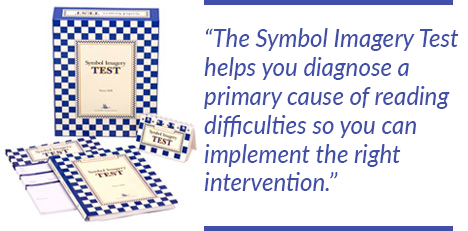-
Comprehension
-
Reading & Spelling
- Mathematics
-
Assessments
-
Diagnostic assessments
- Comprehension, Language, Memory Assessments
- Reading and Spelling Assessments
- Autism Assessments
- Reasoning and Thinking Assessments
- Vocabulary Assessments
- Early Childhood Assessments
- Dyslexia Assessments
- Phonics/Phonemic Awareness Assessments
- Math Assessments
- Fluency Assessments
- Writing Assessments
- Visual/Visual Motor Assessments
- Make Learning Fun

-
Diagnostic assessments
- Workshops
- Blog & News
Research and Results
Research & Results
Study on Children with Autism: Improved reading and brain activity utilizing Visualizing and Verbalizing® instruction.
Ten weeks of Visualizing and Verbalizing® intensive reading intervention for children with autism spectrum disorder (ASD) was enough to strengthen the activity of loosely connected areas of their brains that work together to comprehend reading, University of Alabama at Birmingham researchers have found. At the same time, the reading comprehension of those 13 children, whose average age was 10.9 years, also improved.
"This study is the first to do reading intervention with ASD children using brain imaging techniques, and the findings reflect the plasticity of the brain," said Rajesh Kana, Ph.D., associate professor of psychology in the UAB College of Arts and Sciences and the senior author on this paper. In addition to the task-based fMRI, the UAB researchers used a different approach on the same groups of children—resting-state fMRI.
The task-based study is titled, "The Impact of Reading Intervention on Brain Responses Underlying Language in Children with Autism."
The resting-state study is titled, "Changes in Intrinsic Connectivity of the Brain's Reading Network Following Intervention in Children with Autism."
Gray matter volume (GMV) changes following reading intervention in dyslexic children.
 This study examined changes in GMV following intensive reading intervention using the Seeing Stars® program in children with dyslexia. Results demonstrate for the first time that training-induced changes in GMV can be observed in a pediatric sample and that reading improvements induced by intervention are accompanied by GMV changes.
This study examined changes in GMV following intensive reading intervention using the Seeing Stars® program in children with dyslexia. Results demonstrate for the first time that training-induced changes in GMV can be observed in a pediatric sample and that reading improvements induced by intervention are accompanied by GMV changes.









Socialize and Connect
Connect with us for the latest news, success stories, research, promotions, and more!